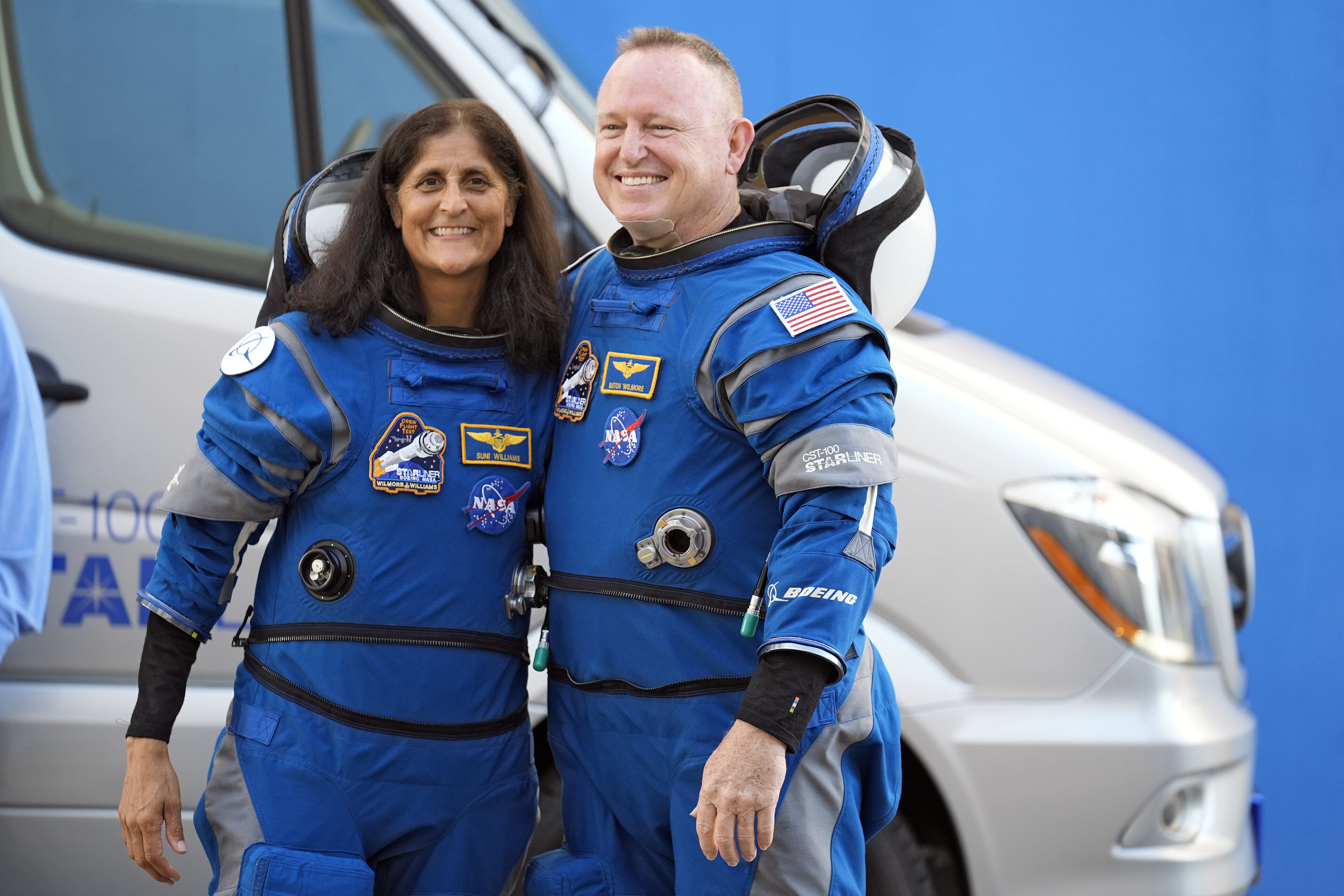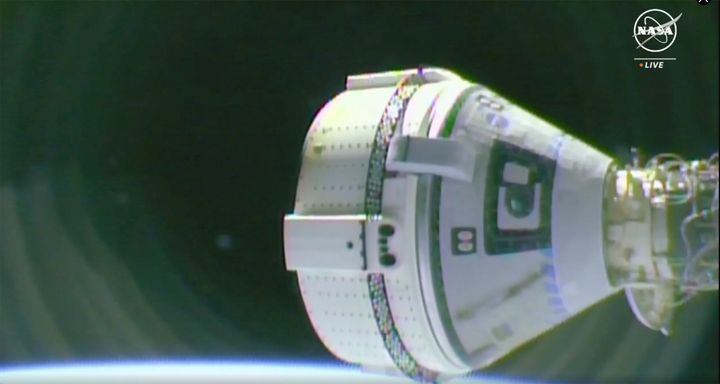NASA Astronauts Again Postpone Return To Earth After Boeing Spacecraft Issues
A roughly one-week trip to space to test out a private Boeing spacecraft has turned into a three-week excursion with no definite return date for two NASA astronauts, after their spacecraft experienced multiple technical issues.
Boeing’s Starliner transportation vessel, which docked at the International Space Station on June 6, has repeatedly postponed its return to Earth, in order to allow technicians to fix and analyze thrusters and helium systems that have unexpectedly shut down or leaked during use, a spokesperson for Boeing confirmed to HuffPost Wednesday.
Advertisement
The spacecraft, which last planned to return on Wednesday, remains cleared for return to Earth in case of an emergency and has “never been ‘stuck’ or ‘stranded’ on the ISS,” as some news outlets have reported, the spokesperson added.

via Associated Press
The affected parts of the spacecraft’s propulsions system are all within the “service module,” the spokesperson explained. When the spacecraft leaves the ISS, those parts will be “discarded and bur[n] up in the atmosphere on reentry,” so all analysis on them has to be conducted in space.
Flight commander Barry “Butch” Wilmore and flight pilot Sunita “Suni” Williams are now looking at a return sometime after two planned spacewalks that are scheduled on June 24 and July 2, Boeing and NASA have said. They were originally scheduled to return on June 14.
Advertisement
There is no rush to return the pair, however, as there are plenty of supplies and the ISS’ schedule is relatively open through mid-August, according to Boeing. The helium leaks are also reported to be stable and not a concern for a return mission, and four of the five troubled thrusters are now operating normally, the company has said.

via Associated Press
“This means only one thruster out of 27 is currently offline. This does not present an issue for the return mission,” the Boeing spokesperson told HuffPost.
Both Wilmore and William have been described as in good condition, and are continuing their work to help certify Starliner for future human space travel.
“The crew’s feedback has been overwhelmingly positive, and they know that every bit of learning we do on the Crew Flight Test will improve and sharpen our experience for future crews,” Mark Nappi, vice president and program manager of Boeing’s Starliner program, said in a NASA blog post last week.
Advertisement
The Starliner, which faced a number of issues and delays prior to liftoff earlier this month, was developed in collaboration with NASA’s Commercial Crew Program, which also has a partnership with Elon Musk’s SpaceX. The program is designed to ferry NASA’s astronauts to and from the International Space Station after the space agency retired its space shuttles.
SpaceX’s Crew Dragon spacecraft is already certified by NASA and was the first private spacecraft to take humans to the space station. It has completed 42 visits to the space station since 2020.

Comments are closed.